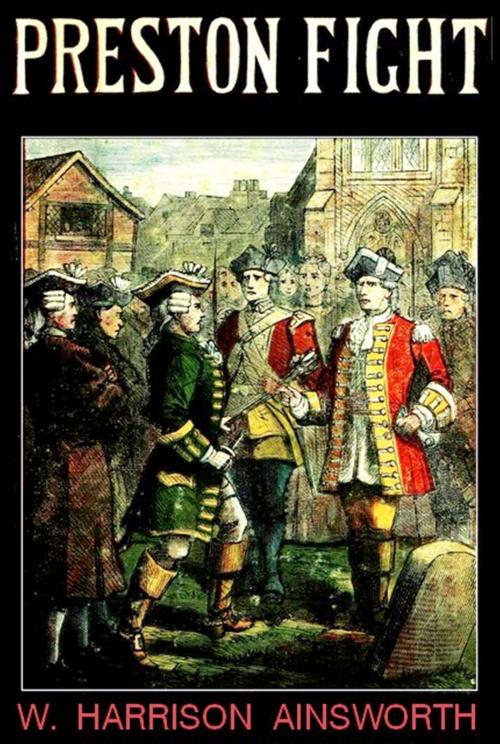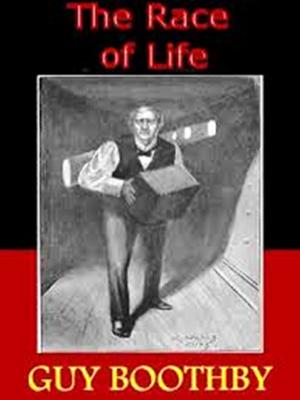| Author: | William Harrison Ainsworth | ISBN: | 1230000139141 |
| Publisher: | WDS Publishing | Publication: | June 5, 2013 |
| Imprint: | Language: | English |
| Author: | William Harrison Ainsworth |
| ISBN: | 1230000139141 |
| Publisher: | WDS Publishing |
| Publication: | June 5, 2013 |
| Imprint: | |
| Language: | English |
A splendid place was Dilston Castle in Northumberland, the seat of the young Earl of Derwentwater, in the early part of the last century.
Crowning an eminence, overlooking a most picturesque district, approached by a long avenue of chestnut trees, and surrounded by woods, extending to the banks of the Tyne, the mansion formed a conspicuous object from whichever side it might be viewed.
Dilston Castle could not boast antiquity, having only been built some sixty years prior to the date of our story, by Sir James Radclyffe, subsequently created Earl of Derwentwater by James the Second, but it occupied the site of an old Border fortress, called Devilstone—since modified to Dilston—that had often resisted the incursions of the Scots.
Of this stronghold, which dated back to the time of Henry the First, only a single memorial was left, in the shape of a grey stone tower—all the rest having been demolished.
The mansion formed a square, and enclosed a spacious court with a fountain in the centre. The principal entrance, approached by a large perron, was inside the court, and faced a grand gateway, that terminated the chestnut avenue.
Close by, though screened by trees, was a little chapel, wherein the rites of Rome were performed—the Radclyffes being strict adherents to the old religion. Hereabouts, also, stood the grey stone tower, before alluded to, and some chambers within it were still used.
As may be supposed, from its size, the mansion contained some magnificent apartments, and these were sumptuously furnished. Large gardens, laid out in the formal French style, and ornamented with terraces, flights of stone steps, statues, and fountains, added to the attractions of the place.
Beneath the acclivity, whereon stood the castle, was a romantic and beautiful dell, the sides of which were clothed with brushwood. Through the midst of the ravine rushed a stream, called the Devil's Water—bright and clear, despite its name—that hurried on, unless checked by a huge rock, or some other impediment, when it spread out into a pool. In places, the glen had a weird look, and many strange legends were connected with it.
The picturesque beauty of the spot was materially heightened by a lofty bridge flung across the hollow, and leading from the castle to the deer-park.
From this bridge, the stately structure, with the charming and diversified scenery around it, could be contemplated to the greatest advantage.
The park boasted many ancient oaks and ash-trees, and was well stocked with deer; the neighbouring moors abounded with grouse, the smaller streams with trout, and the Tyne with salmon. Better shooting and fishing could not be had than at Dilston.
The noble owner of this proud mansion, and the extensive domains attached to it, had succeeded to the title and estates on the death of his father, the second earl, some five years previously. In addition to Dilston, Langley Castle, and Simonburn in Northumberland, he had large estates in Cumberland, and one side of the lovely lake of Derwentwater, from which he derived his title, belonged to him. Moreover, he had lead mines at Alston Moor that produced a very large revenue.
Notwithstanding his immense wealth and importance in the county, the young earl led a very retired life. As a Roman Catholic, he laboured under disabilities that prevented him from taking part in public affairs. But he maintained a numerous establishment, and was extremely hospitable, and his chaplain and almoner, Father Norman, distributed a tithe of his large income in charity.
A splendid place was Dilston Castle in Northumberland, the seat of the young Earl of Derwentwater, in the early part of the last century.
Crowning an eminence, overlooking a most picturesque district, approached by a long avenue of chestnut trees, and surrounded by woods, extending to the banks of the Tyne, the mansion formed a conspicuous object from whichever side it might be viewed.
Dilston Castle could not boast antiquity, having only been built some sixty years prior to the date of our story, by Sir James Radclyffe, subsequently created Earl of Derwentwater by James the Second, but it occupied the site of an old Border fortress, called Devilstone—since modified to Dilston—that had often resisted the incursions of the Scots.
Of this stronghold, which dated back to the time of Henry the First, only a single memorial was left, in the shape of a grey stone tower—all the rest having been demolished.
The mansion formed a square, and enclosed a spacious court with a fountain in the centre. The principal entrance, approached by a large perron, was inside the court, and faced a grand gateway, that terminated the chestnut avenue.
Close by, though screened by trees, was a little chapel, wherein the rites of Rome were performed—the Radclyffes being strict adherents to the old religion. Hereabouts, also, stood the grey stone tower, before alluded to, and some chambers within it were still used.
As may be supposed, from its size, the mansion contained some magnificent apartments, and these were sumptuously furnished. Large gardens, laid out in the formal French style, and ornamented with terraces, flights of stone steps, statues, and fountains, added to the attractions of the place.
Beneath the acclivity, whereon stood the castle, was a romantic and beautiful dell, the sides of which were clothed with brushwood. Through the midst of the ravine rushed a stream, called the Devil's Water—bright and clear, despite its name—that hurried on, unless checked by a huge rock, or some other impediment, when it spread out into a pool. In places, the glen had a weird look, and many strange legends were connected with it.
The picturesque beauty of the spot was materially heightened by a lofty bridge flung across the hollow, and leading from the castle to the deer-park.
From this bridge, the stately structure, with the charming and diversified scenery around it, could be contemplated to the greatest advantage.
The park boasted many ancient oaks and ash-trees, and was well stocked with deer; the neighbouring moors abounded with grouse, the smaller streams with trout, and the Tyne with salmon. Better shooting and fishing could not be had than at Dilston.
The noble owner of this proud mansion, and the extensive domains attached to it, had succeeded to the title and estates on the death of his father, the second earl, some five years previously. In addition to Dilston, Langley Castle, and Simonburn in Northumberland, he had large estates in Cumberland, and one side of the lovely lake of Derwentwater, from which he derived his title, belonged to him. Moreover, he had lead mines at Alston Moor that produced a very large revenue.
Notwithstanding his immense wealth and importance in the county, the young earl led a very retired life. As a Roman Catholic, he laboured under disabilities that prevented him from taking part in public affairs. But he maintained a numerous establishment, and was extremely hospitable, and his chaplain and almoner, Father Norman, distributed a tithe of his large income in charity.















